The new schedule of Curious Entomologist workshops continues, and Saturday 24 September 2016 saw us in the faded grandeur which is the mansion house at Beckenham Place Park.

The portico frontage of John Cator’s grand house in Beckenham Place Park. Arrival by coach and horses no longer obligatory.
As in the previous incarnations, the rationale was simple:
- Convince people that insects are worth studying,
- Show them how to find insects,
- Show them how to kill, preserve, mount, and label sample insects in a basic collection.
After the usual short introduction we set off into the park.

Learning how to look down into a net is an important skill.

More looking into nets.

Soon everyone had got this looking-into-nets thing off pat.

There’s a mild frisson of excitement looking for insects down the side of a public golf course, but there were no injuries today.
Back in the house the ‘laboratory’ was set up in the grand board room. Despite the formal elegance of the Georgian mansion, the natural light wasn’t perfect, but we made do with small desk lights and built-in microscope lights.
It seems so obvious to me, as an entomologist, that some insects have to be killed in order to identify them, but this is still an issue that some people find at odds with the credo of nature conservation and the wider appreciation of wildlife. In an earlier blog on my collection of ladybirds I tried to discuss just why entomologists still need to kill and keep dry dusty museum specimens.
One of the most important reasons for studying insects (apart from their astonishing abundance, their mind-numbing diversity and their total dominance of the middle portion of virtually all terrestrial food-webs) is that you really do not need any expensive technical paraphernalia to get going. At the bottom of this blog, one of the hand-outs is a crib-type sheet offering easy and cheap domestic alternatives to what might otherwise be expensive specialist equipment and materials.

This is my portable laboratory. It contains everything I need: hand lens, pins, gum, fine paint-brushes, card, mounting strips, tweezers.
In the high-ceilinged room the aura of hushed concentration was emphasized as everyone set to work pinning and carding. This is the fiddly bit. I’d picked out an old travel box fitted with setting boards. I must admit that I never use these nowadays; in fact I have to put my hands up in the air and admit, straight out, that my setting is rather slapdash. If I can get a pin through it, or can tease out a few legs and the odd antenna onto the gummed card, then I’m happy.
As usual, plenty of unusual and odd things turned up. Here’s just a selection of species. All of these are under 6mm long, and virtually impossible, even for a specialist in any of the groups, to firmly identify in the field. I particularly liked the shiny black parasitoid Psylus. Choose your statistic here, but there are claims that one in five of all species on the planet is a parasitoid wasp. They are hugely numerous and diverse in the UK, but sorely under-studied and under-recorded. I’ve got several specimens of this genus, and I’m tentatively happy with my identifications using a translation of an old Russian key. But have a look at the National Biodiversity Network database and it lists only 20 records split amongst the eight UK species. This is nothing to do with the insects’ true rarity, just the rarity of people studying the group.

A Psylus parasitoid wasp, possibly P. cornutus, greeted by cries of “urgh, evil-looking thing” down the microscope. Easy to see where Ridley Scott got his inspiration for the Alien movies.

Rhyzobius chrysomeloides, only recognized as British in 1996, and distinguished from the ubiquitous R. litura by the angle at which the pronotum meets the shoulders of the wing-cases.

Pogonochaerus hispidus, a small (4.5mm) longhorn, beautifully camouflaged on a lichen-coloured tree trunk. Distinguished by the small spines at the tip of the wing-cases and the all-black scutellum. Not easily visible in the field, even with a hand lens.
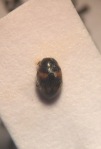
Nephus quadrimaculatus, a tiny (1.8mm) ladybird, and until recently considered very rare; it appears to be increasing in central and south-eastern England, where it is sometimes beaten from ivy.
The final workshop this year is a full-house at Devonshire Road Nature Reserve (1 October).
Curious entomologist handouts:

Easy equipment and materials

List of entry-level books to get started.

Setting styles and data labels
______________________________________________________
And a few useful links:
The basics of collecting, pinning, carding, labelling and curating a collection are pretty well covered in plenty of books, a few sources are available on-line, especially in the USA:
This is from the University of Arkansas
And this from the University of Minnesota.
This rather quaint book, How to make an insect collection, is nevertheless very useful.
Equipment
Much equipment can be home-made. Here is a list of easy and cheap alternatives to many expensive items. When starting out, entomological pins are important, finer, better quality and corrosion-resistant compared to sewing pins. A good hand lens (x 10 magnification is fine) will also be a great help. Here’s a guide to getting a lens. However, for a full range of everything from micro-pins to research-quality microscopes, there are several commercial suppliers including:
Watkins and Doncaster
Anglian Lepidopterist Supplies
B&S Entomological Services
Some of these companies also sell microscopes, otherwise there are:
Brunel Microscopes
And GX Optical
To start, a stereomicroscope may seem a bit of a luxury, but cheap models are available for around £80. The most important point is low magnification rather than high: x10 or x20. A stereo-scope with swiveling turret, allowing you to swap easily between x10 and x30 is perfect, starting at £100-£150. A zoom microscope giving a range of about x10 to x45 is a delight from £350. Here’s a brief guide to buying a budget stereomicroscope.
Naming insects
Identifying insects can be tricky. There are now upwards of 200 years of complex entomological monographs and identification guides. Although on-line help is becoming available, much of what we know about insects is still hidden away in books and journals and finding the right identification key for the right insect can be a daunting task. Before launching into book-buying, perhaps the easiest path is to see whether particular groups of insects appeal to the individual more than others. At least by specializing in limited insect orders you can narrow your field of search for identification answers.
There is no point in trying to get a comprehensive list of British insect books together. So many of them are highly technical or complex, enough to baffle even the relative expert. As someone develops an interest in particular groups, they will come across further references to increasingly obscure and arcane papers published in scientific journals; they may also decide to invest in expensive modern monographs or even more expensive antiquarian books.
So here is a list of books that I think might be useful to the novice British entomologist. It is, I admit, a personal list, and it’s just a taster.
Picture books are a start, but they often fail to indicate just how many ‘similar’ species (virtually identical to the naked eye) are not illustrated. I always recommend Collins guide to the Insects of Britain and Western Europe by Michael Chinery, as a good starter because it has so many excellent pictures. It appears to be out of print at the moment, but copies are usually to be had on ebay or through second-hand bookshops and websites.
I also recommend iSpot for getting photographs of insects named. This is a great site, run by the Open University and regularly browsed by experts ready to name whatever is posted up. This would also be the place to post a picture of a pinned or carded specimen too.
Beyond the first ‘easy’ species, the best way to get an insect specimen named is to seek help and advice from an expert. And although they may not be open to naming box-loads of specimens sent unsolicited, many entomologists running recording schemes, or studying particular groups of insects, are often more than pleased to receive material, especially from a new source. Just make contact first to see what help might be on offer.
Local museums often have reference collections of insects, donated by local entomologists, and sometimes the museums are also connected with regional recording schemes. They are often more than happy to allow interested visitors behind-the-scenes access to these collections, either to allow visiting experts to re-identify specimens and confirm names, or to allow others to bring in their own specimens for checking. The Natural History Museum has the Angela Marmot Centre for UK Biodiversity, set up specifically to encourage people to make their own identifications using the facilities available. Here is my take on the centre, and here is a link to their own website.
Further information
Here, to start, is a series of links to societies, recording schemes and the like. They have links to other sources of help and information too.
Amateur Entomologists’ Society Society for the beginner. Publishes a good series of introductory handbooks to various insect orders. An annual exhibition is held each autumn with large numbers of exhibitor stands selling books and equipment, new and secondhand.
Bees, Wasps and Ants Recording Society Excellent website covering this natural grouping of stinging, but fascinating, insects.
Biological Records Centre, Recording Schemes List Contact details of each of the very many recording schemes; scroll down to find the insect ones.
British Bugs On-line photographic identification guide.
British Dragonfly Society On-line news, identification and fact sheets and recording details.
British Entomological and Natural History Society The society for the up-and-coming ‘field’ entomologist, running field meetings, advanced identification workshops and publishing some excellent identification guides.
Buglife The Invertebrate Conservation Trust, campaigning for insect conservation.
Butterfly Conservation Campaigning for butterfly and moth conservation.
Dipterists Forum Specialist fly-recording society, but useful website.
Field Studies Council Various publications, field courses and wildlife information.
Koleopterologie German on-line photographic identification gallery for beetles.
National Federation of Biological Recorders Names and addresses of regional and county recording schemes.
Royal Entomological Society For the expert or professional, but a large society which publishes important identification guides (some rather technical). The ‘Useful Links’ section of their website is very extensive and useful.
UK Moths On-line photographic identification guide to moths.
Watford Coleoptera Group Includes an on-line photographic gallery.
Other sources of help are: local natural history societies, local museums (which often have insect collections behind the scenes even if not on show in the exhibit galleries), or perhaps even a friendly local entomologist.






































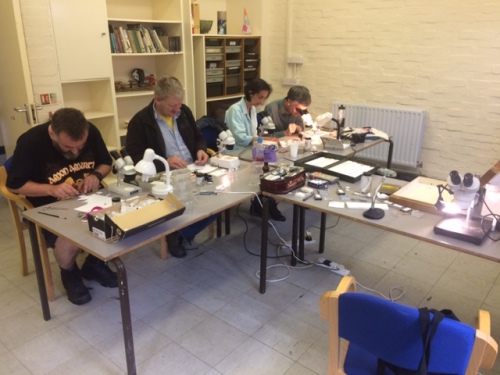










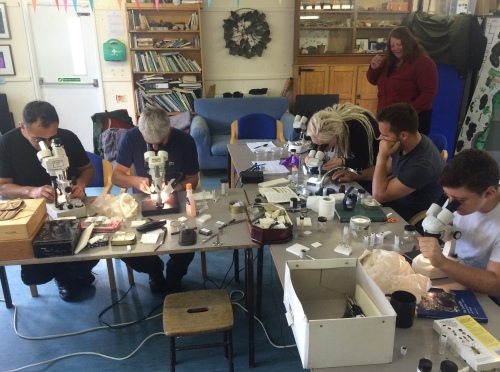








































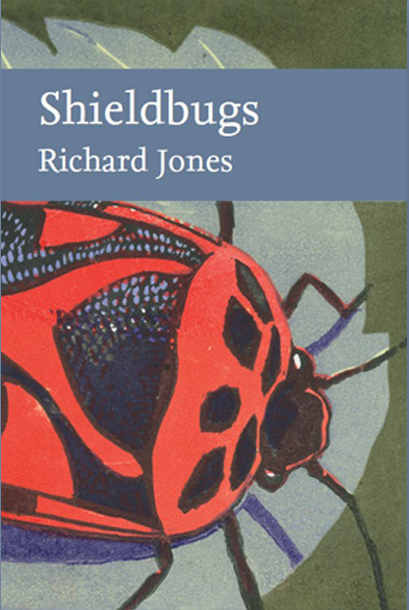

















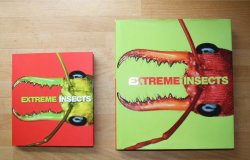
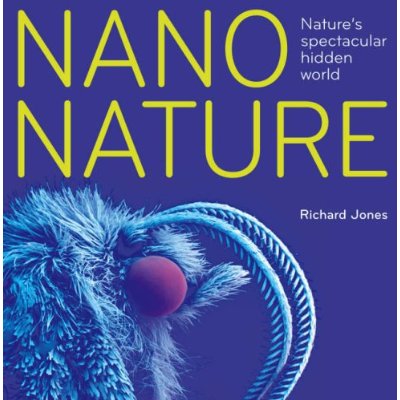
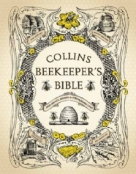



You must be logged in to post a comment.